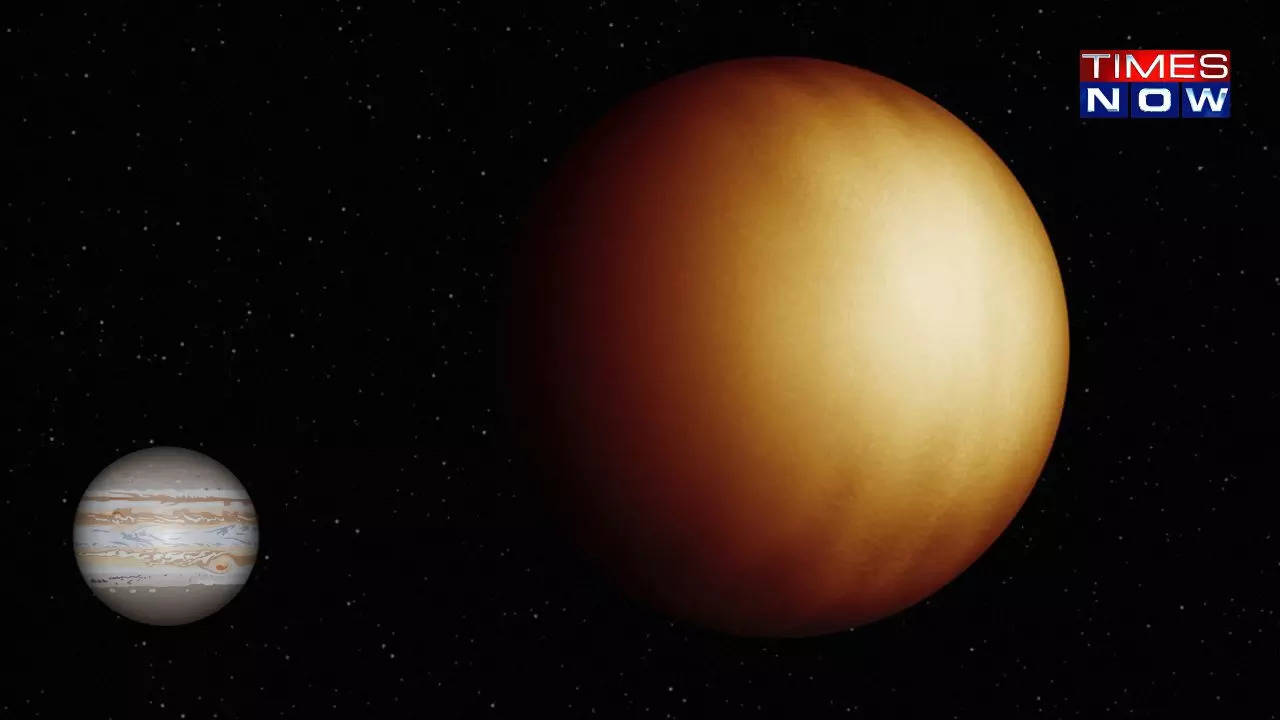NASA's Webb Telescope Spots Water Vapor on Mega-Exoplanet Ten Times Larger Than Jupiter!
NASA's James Webb Space Telescope makes a monumental discovery by identifying water vapor on the far-off exoplanet, WASP-18 b, that is ten times larger than Jupiter.

Illustration
KEY HIGHLIGHTS
- NASA's James Webb Space Telescope identifies water vapor on the unique exoplanet WASP-18 b, ten times larger than Jupiter.
- Temperature map of WASP-18 b reveals a stunning difference of up to 1,000 degrees between the hottest and coolest points.
- Despite high heat levels, the Webb Telescope finds "multiple small but precisely measured water features" on WASP-18 b.
NASA's powerhouse, the James Webb Space Telescope, has made an astounding discovery. It's found traces of water vapor in the atmosphere of a truly unique exoplanet, WASP-18 b , which lies hundreds of light-years away from our home planet, Earth.
A Glimpse into the Unique Exoplanet
WASP-18 b, first spotted by NASA back in 2009, is not your run-of-the-mill exoplanet. This gas giant is enormous, ten times the size of Jupiter. It also has a super-short orbit of just 23 hours, and its rotation is locked, which means one side perpetually basks in the sun's rays while the other remains forever shrouded in darkness.
Unveiling a Thermal Map of WASP-18 b
NASA's scientists first produced a brightness map of this giant exoplanet, followed by a temperature map of its atmosphere. The temperature map showed a remarkable difference of up to 1,000 degrees between the planet's warmest and coolest points. The temperature fluctuations even varied significantly based on altitude.
Unraveling the Secrets of WASP-18 b
This giant exoplanet is finally getting the attention it deserves, with the Webb Telescope's sensitivity enabling much more detailed maps than ever before. The study's co-author, Megan Mansfield, was particularly excited to see predictions like the steep temperature drop away from the star-facing point confirmed in the data.
NASA suggests the considerable temperature differences may be due to some impediment preventing efficient heat redistribution to the planet's night side. Possibilities include a potent magnetic field, which could hinder the winds.
Water Vapor in Extreme Heat
Despite blistering temperatures that can reach nearly 5,000 degrees Fahrenheit in places, the Webb telescope identified "multiple small but precisely measured water features" at various elevations.
The study's authors believe these findings could aid in detecting similar water vapor traces in other atmospheres, enhancing our understanding of how such distinct planets form.
Trending:
End of Article
Subscribe to our daily Newsletter!
Related News





Zomato Orders Will Soon Come Faster Than Before, But You Have To Pay More

Chinese Keyboard Apps On Xiaomi, Oppo, Vivo Phones Have A Flaw That Reveals Everything You Type

iPhone 16 Could Launch Without Any Physical Buttons, What To Expect

JioCinema Premium Plans Without Ads Now Starts From Rs 29, How To Get

Meta CEO Zuckerberg Says Building Something Using Generative AI Is Going To Be Expensive, Here Is Why








